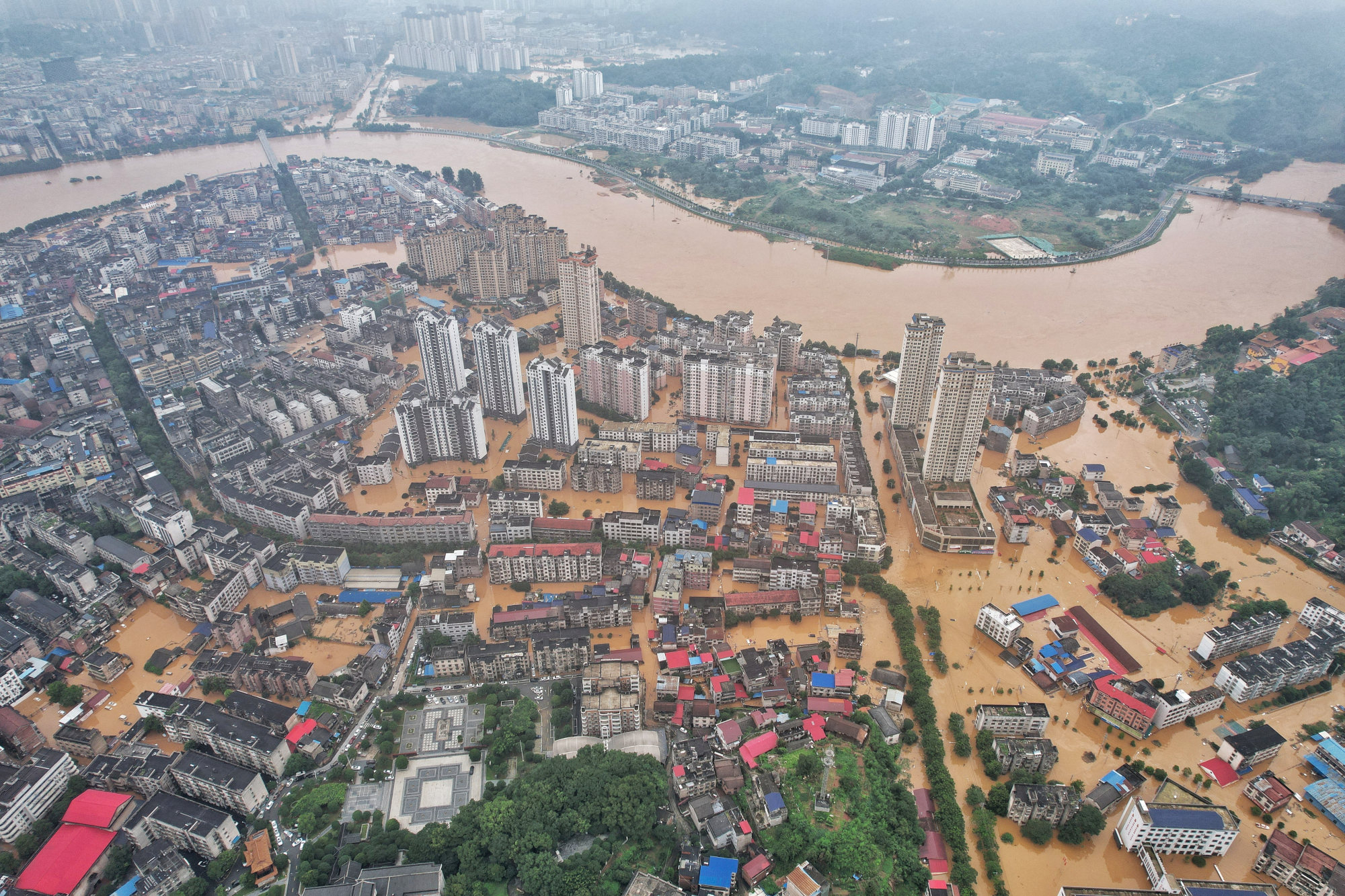Extreme weather triggered is setting off alarm bells in China’s insurance sector, the world’s second largest, which urgently needs more financial tools to mitigate risks from the economic damage wreaked by the growing incidents of droughts, floods and landslides across the country.
Despite recent progress from the government and the insurance companies in compensating for losses from natural disasters, China, which already lags developed countries in insurance penetration, needs to do more in expanding catastrophe insurance coverage, insurance industry specialists said.
“There are areas where China’s insurers need to catch up, particularly in addressing emerging risks associated with climate change,” Peggy Ding, placement leader at Marsh China, told the Post last week.
Do you have questions about the biggest topics and trends from around the world? Get the answers with SCMP Knowledge, our new platform of curated content with explainers, FAQs, analyses and infographics brought to you by our award-winning team.
As more frequent extreme weather events, induced by climate change, are expected to become the “new norm”, insurers need to develop innovative insurance products that can effectively respond to these risks, she said.

This is a timely reminder as a series of natural disasters hit China, where only around 10 per cent of the losses from natural disasters are covered by insurance, compared to the global average of 40 per cent, according to data from National Financial Regulatory Administration (NFRA).
Several parts of China, including southern Guangdong province, southwestern Sichuan, and eastern Henan province, have been grappling with devastating floods after prolonged rainfalls since this summer. It’s estimated there have been at least 20.7 million people affected and 86 people killed or missing due to the extreme floods this year, China’s Ministry of Emergency Management said at a press conference on July 12.
Chinese authorities announced on Sunday that another 12 people have died and more than 30 are missing in a partial collapse of a highway bridge in northwestern Shaanxi province on Friday, as a result of floods and heavy storms.
Flood-hit provinces in China have reported 95,000 insurance claims worth 3.21 billion yuan (US$441 million) this year. Insurance payouts and prepayments have exceeded 1.1 billion yuan, according to data from the NFRA.
While China’s performance in insuring losses from natural disasters has shown significant growth in recent years, coverage gaps remain.
“The insurance industry is facing significant challenges due to climate change,” said Ding. “Limited historical data, concentrated geographic risks, affordability and accessibility issues, and the regulatory and policy environment are among the key challenges.”
The NFRA and the Ministry of Finance also upgraded China’s catastrophic insurance system for the first time in March, eight years after the system’s implementation in 2016, to include disasters such as typhoons, floods, heavy rainfalls, and landslides in its coverage, doubling the minimum amount insured.
Still, the country’s insurance sector must promote more new and tailored insurance products to better address the specific risks associated with climate change and provide comprehensive coverage to policyholders, Ding said.
China also needs to establish a multilevel catastrophic risk protection system that includes insurance, reinsurance, catastrophe risk protection funds, catastrophe bonds, and other measures supported by central and local finances to leverage the power of the capital market and expand channels for disaster risk diversification, according to Ding.
It is also crucial to establish climate information disclosure and sharing mechanisms to help insurers improve their risk models, she said.
Parametric insurance is an example of a product that can offer protection from more frequent weather- and climate-related risks, according to He Sisi, head of alternative risk transfer at Marsh Asia, referring to a type of insurance contract that pays out a predetermined amount based on the occurrence and intensity of a specific event upon proof of loss.
“For example, it pays out based on predefined triggers such as temperature thresholds, rainfall levels, snowfall level or wind speeds, which allows companies to receive quick and predictable payouts with greater certainty in the event of a weather-related event, enabling them to recover and adapt more effectively,” said He.
Nine of China’s provinces – accounting for more than half of the nation’s GDP – take up the top nine spots on a list of the states and provinces around the world that are most likely to suffer as natural disasters related to climate change become more extreme and frequent, putting lives and assets at risk.
The list, released last year by Cross Dependency Initiative (XDI), a Sydney-headquartered climate-change research firm, has 26 of China’s provinces in its top 50.
In addition to providing financial relief to the catastrophic losses, insurers should also educate their clients to mitigate potential risks associated with the climate-induced disasters, according to Chelsea Jiang, chief technical and innovation officer of general insurance at AXA Greater China.
“Insurers need to be able to simplify, disseminate, and educate our customers information related to climate change and natural disasters, so that they start to understand fundamentally how this is going to impact their business and their individual lives and take actions proactively to prevent the losses,” she said.
More from South China Morning Post:
- Climate change: Catastrophe bonds could see robust growth in China, as policymakers seek more financial tools to prepare for natural disasters
- Under-insured China vulnerable amid rise in natural catastrophes: Munich Re
- Typhoon Doksuri’s 2023 rampage across China leaves US$23 billion shortfall in insurance coverage, Munich Re says
For the latest news from the South China Morning Post download our mobile app. Copyright 2024.





